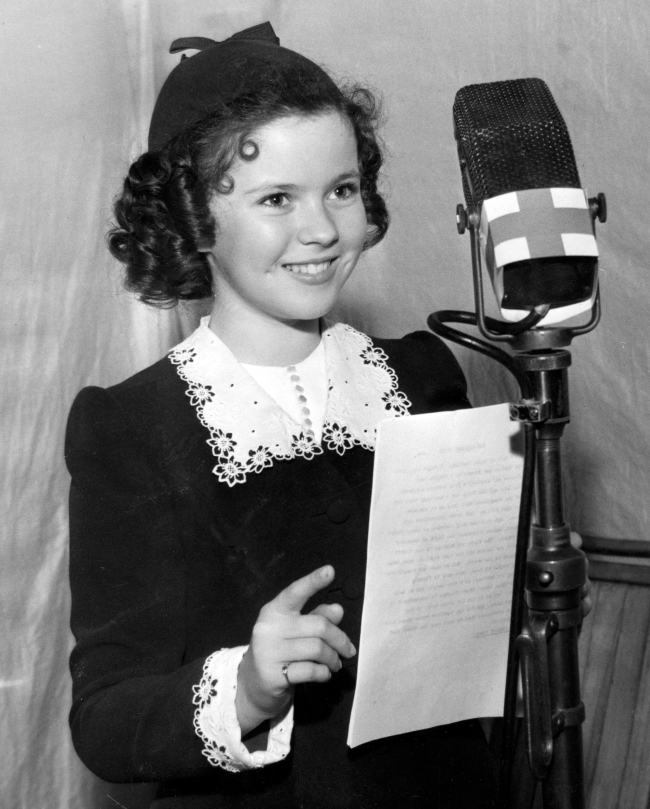If ever a performer came along at just the right time, it was Shirley Temple. The cherubic face and unbreakable spirit she displayed in her cinematic confections of the 1930s were the perfect spoonfuls of sugar to help the bitter medicine of the Depression go down easier for millions of Americans.
The timing also couldn’t be better for John F. Kasson’s “The Little Girl Who Fought the Great Depression,” which arrives just two months after Temple’s death at age 85. The book is a wonderful epilogue to Temple’s career ― which was steered by her mother, Gertrude, who had Shirley taking dance lessons before she was 3 ― and an enlightening examination of the curly topped moppet’s impact on Hollywood, the economy and the mood of a troubled nation.
 |
Shirley Temple Black, shown in 1940, went from being a child film star to a diplomatic career serving the U.S. in the United Nations and as an ambassador. (Los Angeles Times/MCT) |
Kasson takes a two-pronged approach in his study of 1930s America. He details events that led to the Depression, starting with Herbert Hoover’s presidency through the FDR years. He also links Temple to President Franklin Delano Roosevelt, both masters at rallying a nation through their use of media and their million-dollar smiles.
Equally well presented is his detailing of Temple’s career from her humble show-biz beginnings at age 3 in the low-budget “Baby Burlesk” shorts, which had an all-toddler cast spoofing popular movies of the time, through her glory years as Hollywood’s most bankable star. Her films at home studio 20th Century-Fox all followed a similar formula, often with Shirley as an orphan thrust into a custody battle. But there were no adversities she couldn’t overcome with a song (with titles like “You Gotta S-M-I-L-E”) or a dance (Kasson also devotes ample space to her partnership with African-American hoofer Bill “Bojangles” Robinson).
After she sang “On the Good Ship Lollipop” in the 1934 film “Bright Eyes,” not only was a star born, so was a phenomenon. Temple topped the box office from 1935 to 1938 and became a marketing machine who got the economy moving again as Americans shelled out precious dollars on Temple merchandise including dolls, dresses, coloring books, pitchers and tons more. By 1940, Kasson writes, Americans had spent an estimated $45 million on Shirley Temple dolls.
In her post-show biz years, Shirley Temple Black had a rewarding career serving as ambassador to Ghana and later Czechoslovakia. But none of her later accomplishments could surpass her previous role as the U.S. ambassador of cheer and goodwill during the Depression, a part she played with an indomitable spirit and a smile as sunny as the beaches of Peppermint Bay.
“I went to work every day,” Temple recalled years later about growing up on a soundstage. “I thought every child went to work, because I was born into it.”
By Daniel Bubbeo
(Newsday)
(MCT Information Services)








